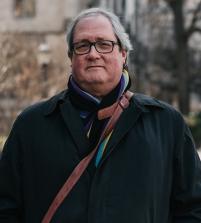
Sunday Mournings
Sunday worship was valorized as something it was not, but the “new normal” could turn out to be something that warrants renewed hope.
One hallmark of the pandemic in Christian religious communities – duly emphasized in the religious press – was the absence of in-person Sunday worship. Covid impoverished religious practice and the sense of community that church attendance fosters and sustains. A major question, still pending at least in the minds of ministers and congregants I know, is what will be the aftermath. While all concur that there will be no such thing as “a return to normalcy,” my informal and unprofessional audit has elicited a wide array of projections. Most arresting for me was the highly skilled minister of a vibrant and large urban congregation who remarked that “Pancakes and pajamas have won the day, and we will never be the same.” This minister anticipates, with modulated excitement but unmistakable sobriety, a major rebuilding effort.
There is pre-Covid precedent for this formulation. Wallace Stevens’ most anthologized poem, “Sunday Morning,” offered in 1915 an unflinching examination of what had then come “to dissipate the holy hush of ancient sacrifice.” Instead of the alliterative “pajamas and pancakes,” Stevens invokes “complacencies of the peignoir” and “coffee and oranges in a sunny chair.” His speaker then observes that “Palestine” – which he terms “Dominion of the blood and sepulchre” – is “silent.”
Stevens understood his considerable poetic output to serve the quest for a “supreme fiction” to replace the no-longer tenable God of American Protestantism on which he was raised (through regular church attendance). The difference is that instead of the terror of the pandemic, the problem that drove him from the pews appears to have been the proclamation from the pulpit of the Protestant God.
The striking confluence of the minister’s formulation of the present situation cited above with Stevens’ earlier pronouncement suggests that the classic American form of Sunday worship has actually been troubled for a very long time. Some of its leadership and many of those who occupy the pews certainly grasp this. Yet the implication of much of the public rhetoric – that Covid effected the exodus of massive cohorts of devout, regularly attending worshippers – is a misleading characterization of a fact of that old-time American religion.
It is undoubtedly the case that those who lament the effect Covid has had on Christian worship are those who faithfully attend services and feel most acutely their absence. I respect and admire their commitment and conviction. I also worry about the innate human tendency to overgeneralize based on one’s personal experience. When the philosopher Hegel wrote, “It is a long time since knees were bent in piety,” a wag observed that Hegel’s broad generalization in fact only referenced himself and two or three of his friends. In retrospect, Hegel’s observation of his own time and place was probably accurate; and the wag’s principle likely applies to those nostalgic for a Sunday worship that never really was.
To be clear, I have my own cherished version of that nostalgia. As a Roman Catholic whose eight grade school years began with daily Mass attendance, and who still readily reverences the pronouncement of the words of institution in the Eucharistic prayer, I cherish the viscerality of in-person worship. I think many congregations were nothing short of heroic, courageously closing their doors with the onset of the pandemic and then discovering ways to provide simulacra of liturgical life. The pandemic was and is an authentic threat and liturgy was and is an integral occasion. Like the metaphor of the irresistible force and the immovable object, they clashed.
But as with so many social and personal phenomena under the unkind umbrella of Covid, it seems to me that Sunday worship was valorized as something it was not. In addition to continuing (mostly) to be the most segregated hour of the week, Sunday worship is also (broadly) the most fitfully attended. On this the data, not to mention eyewitnesses, are in perfect concord: attendance rates hover at around 30% of those who identify with a specific tradition. The numbers – not in the end the most important thing, but the initial nub of the matter in this case – have not, do not, and almost certainly will not support the rhetoric.
I recognize that there are varieties of religious experience here – the pastor cited above would almost certainly nuance this account – but I have watched enough churches long enough to feel that what I describe is closer to, rather than farther from, the reality. Without wishing to qualify the real effects Covid had on worship, and the tremendous creative energy that some congregations put into responding to those effects, the absences on Sunday mornings have been of longer and more enduring duration than Covid accounts imply.
So the churches will never be the same. But the churches have never been “the same” for a much longer time than tends to be acknowledged. Part of the “new normal” – perhaps its opening gambit? – should be to acknowledge and work from that disjuncture. This would also reckon with the fact that the most profound theological questions are ministerial questions: is the disinclination, even I suspect the disaffection that avowed believers feel for liturgical life a function – as it almost surely was for Stevens – of finding the church’s proclamation of God unpersuasive? Or is it driven by sheer commercial competition? If Covid forces the churches to confront (rather than to elide) that vexingly fine line, the “new normal” could turn out to be something that warrants renewed hope and anticipation.
Sightings is edited by Alireza Doostdar and Willemien Otten. Sign up here to receive Sightings via email. You can also follow us on Facebook and Twitter. The views and opinions expressed in this article are those of the author and do not necessarily reflect the position of the Marty Center or its editor.


